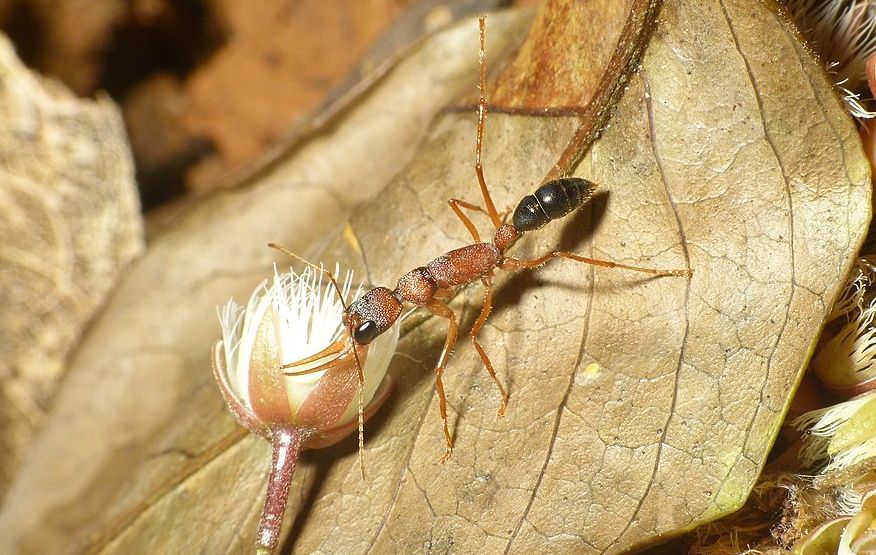
Many species of ants live in colonies with fixed reproductive roles: one or more queens that lay the eggs, and many sterile workers who forage for food, care for the queen, her young offspring and the nest. In most species these roles are for life, but there’s some in which workers can assume the role of a queen.
One such species is the Indian jumping ant (Harpegnathos saltator). They live in small colonies of about 100 individuals. Colonies are started by a single queen. Most of her offspring becomes workers. When they are young, they work in the nest and their brain is relatively small. Older workers start to forage outside the nest and their brain grows – after all it is needed for spatial orientation, hunting and defence.
When the founding queen grows old, the workers fight to take over her place. The victorious ones turn into so-called gamergates. Their genes related to reproduction activate, hormonal changes occur, egg production begins, and aging slows down. Their behaviour also changes. Experiments have shown that when attacked, the gamergates do not defend themselves, but rather run away. And when they are left alone with a living prey, they do not attack it. Additionally, their brain shrinks (its size is approximately 20% smaller than that of foragers). The work of the brain requires a lot of energy, and since the gamergates are under the constant care of workers, it is better to use this energy to produce eggs than to maintain an expensive organ that is hardly used.
Recently, scientists have shown that all these changes in the gamergates are reversible. When they were separated from the nest for a few weeks and then returned to it, it appeared that they lost their reproductive status. Other ants began to police them so that they would not lay eggs. The former gamergates returned to the role of workers. They stopped producing eggs, spent most of their time outside the nest, began producing venom and started hunting and defending themselves from enemy attacks. Their brain grew back to the size of worker foragers.
Therefore, in this species the brain is very flexible. More so than the brain of bees and fruit flies.
Photo: L. Shyamal – Own work, CC BY-SA 4.0, https://commons.wikimedia.org/w/index.php?curid=64046654
Polską wersję tego wpisu możesz znaleźć tutaj.
